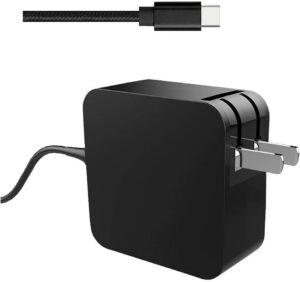Looking to connect your Tesla Wall Charger? We’ve got you covered! In this article, we’ll walk you through the straightforward steps of connecting your Tesla Wall Charger, so you can start charging your electric vehicle hassle-free. Whether you’re a new Tesla owner or simply looking to learn more about how to connect the Tesla Wall Charger, you’ve come to the right place. Stay tuned as we delve into the process and provide you with everything you need to know to get your charger up and running smoothly. Let’s dive in!
How to Connect a Tesla Wall Charger: A Comprehensive Guide
Electric vehicles are gaining popularity due to their eco-friendliness and cost-efficiency. Tesla, one of the leading manufacturers of electric cars, provides its customers with a convenient and efficient way to charge their vehicles at home through the Tesla Wall Charger. In this guide, we will walk you through the step-by-step process of connecting and using a Tesla Wall Charger, ensuring a hassle-free charging experience for your electric vehicle.
1. Understanding the Tesla Wall Charger
Before we dive into the installation process, let’s take a moment to understand the Tesla Wall Charger. The Tesla Wall Charger, also known as the Tesla Wall Connector, is a device that allows you to charge your Tesla vehicle at home. It is designed to provide faster charging speeds compared to a standard electrical outlet, helping you maximize your electric vehicle’s charging efficiency.
Here are some key features and specifications of the Tesla Wall Charger:
– Charging Power: The Tesla Wall Charger typically provides up to 48 amps of charging power, allowing for faster charging times compared to a standard wall outlet.
– Versatility: It is compatible with all Tesla vehicle models and can be adjusted to different power levels based on your vehicle’s charging capabilities.
– Customizable Charging: The Tesla Wall Charger allows you to set charging limits, schedule charging sessions, and monitor your vehicle’s charging status through the Tesla mobile app.
– Ease of Use: The Wall Charger features a sleek and compact design, making it easy to install in your home garage or parking area.
2. Preparing for Installation
Now that we have a good understanding of the Tesla Wall Charger, let’s move on to the installation process. Before you start, it’s essential to gather the necessary tools and materials and ensure that you have a suitable electrical setup for the Wall Charger installation.
Here’s a checklist of what you’ll need:
– Tesla Wall Charger: Purchase the Tesla Wall Charger from an authorized Tesla dealer or online store.
– Electrical Panel: Locate your home’s electrical panel and identify an available circuit breaker with sufficient capacity to handle the charging load. Ideally, a 60-amp circuit breaker is recommended.
– Wiring: Determine the optimal route for running the wiring from your electrical panel to the desired location for the Tesla Wall Charger installation.
– Conduit and Connectors: If required, purchase appropriate electrical conduit and connectors to protect and secure the wiring.
– Permits and Inspections: Check with your local building department to determine if any permits or inspections are necessary before you start the installation process.
3. Installation Process
Follow these step-by-step instructions to install your Tesla Wall Charger:
Step 1: Turn Off Power
– Begin by shutting off the main power supply to your home at the electrical panel. This step is crucial for your safety during the installation process.
Step 2: Mount the Tesla Wall Charger
– Select a suitable location in your garage or parking area to mount the Tesla Wall Charger. Ensure it is within reach of your vehicle’s charging port.
– Use appropriate hardware to securely mount the Wall Charger on the wall, following the manufacturer’s instructions.
Step 3: Install Circuit Breaker
– Install a 60-amp circuit breaker in your electrical panel. Consult a certified electrician if you are unsure about the appropriate circuit breaker size for your specific electrical setup.
– Ensure the circuit breaker is properly wired to supply power to the Tesla Wall Charger.
Step 4: Route the Wiring
– Run the appropriate gauge wiring from your electrical panel to the location of the Tesla Wall Charger.
– If necessary, use electrical conduit to protect and secure the wiring along its route.
– Follow local building codes and regulations regarding wire placement and protection.
Step 5: Connect Wiring to the Tesla Wall Charger
– Strip the ends of the wiring to expose the copper wire.
– Connect the wiring to the appropriate terminals on the Tesla Wall Charger, following the manufacturer’s instructions.
– Ensure all connections are secure and tight.
Step 6: Test the Installation
– Before restoring power, double-check all connections to ensure they are secure and properly installed.
– Once verified, turn on the main power supply to your home at the electrical panel.
4. Using the Tesla Wall Charger
With the installation complete, it’s time to start using your Tesla Wall Charger to conveniently charge your electric vehicle. Here’s how to get started:
Step 1: Configure Charging Settings
– Download the Tesla mobile app on your smartphone and create a Tesla account if you haven’t already.
– Open the app and navigate to the Charging section to configure your charging settings.
– You can set your desired charging limit, schedule charging sessions, and monitor your vehicle’s charging status remotely.
Step 2: Connect Your Vehicle
– Open the charging port door on your Tesla vehicle.
– Plug the charging cable into the vehicle’s charging port until it locks into place.
– Ensure that the charging indicator light on the Tesla Wall Charger illuminates, indicating a successful connection.
Step 3: Monitor Charging Progress
– Once connected, your Tesla vehicle will start charging automatically based on the settings you configured.
– You can monitor the charging progress and view real-time charging data through the Tesla mobile app.
5. Troubleshooting and Safety Tips
While the Tesla Wall Charger is a reliable and user-friendly charging solution, here are some troubleshooting tips and safety precautions to keep in mind:
– If you encounter any issues during installation, such as unfamiliar wiring or inadequate electrical capacity, consult a certified electrician for assistance. Safety should always be a top priority.
– Regularly inspect the charging cable and connections for signs of damage or wear. Replace any damaged components to maintain a safe and efficient charging system.
– In case of a power outage or fluctuations, your Tesla Wall Charger will automatically resume charging once power is restored or stabilized.
– If you experience any charging-related issues, refer to the Tesla support resources or contact Tesla customer support for assistance.
In conclusion, connecting a Tesla Wall Charger to your home is a straightforward process that allows you to conveniently and efficiently charge your Tesla electric vehicle. By following the installation steps outlined in this guide and adhering to safety precautions, you can enjoy a hassle-free charging experience and maximize the benefits of owning an electric vehicle. Happy charging!
Frequently Asked Questions
How do I connect my Tesla Wall Charger?
To connect your Tesla Wall Charger, follow these steps:
- Locate the charging port on your Tesla vehicle.
- Open the charging port door.
- Take the charging cable from your Tesla Wall Charger and insert it into the charging port on your vehicle.
- Ensure that the cable is securely connected to the vehicle.
- Plug the other end of the charging cable into your Tesla Wall Charger.
- Make sure the charger is properly plugged into a power outlet or a dedicated circuit.
- Your vehicle should now begin charging.
Can I install the Tesla Wall Charger myself?
While it is possible to install the Tesla Wall Charger yourself if you have electrical expertise, it is recommended to hire a licensed electrician to ensure the installation is done safely and meets local electrical codes. Handling electrical connections can be dangerous, so professional installation is often the best option.
What are the electrical requirements for the Tesla Wall Charger?
The Tesla Wall Charger requires certain electrical specifications for proper operation. It typically needs a 240-volt electrical supply with a dedicated circuit. The charger comes with a NEMA 14-50 plug, so you may need an adapter if your electrical outlet is different. It’s important to consult the Tesla Wall Charger installation guide or contact a certified electrician to ensure your electrical system meets the requirements.
Is the Tesla Wall Charger compatible with other electric vehicles?
The Tesla Wall Charger is specifically designed for Tesla vehicles. While it may physically fit other electric vehicles with a compatible charging port, it is recommended to use the charging equipment provided by the manufacturer of your electric vehicle. Using the Tesla Wall Charger with non-Tesla vehicles may not provide optimal charging performance and could potentially damage the vehicle.
Can I control the charging settings of the Tesla Wall Charger?
Yes, you can control the charging settings of the Tesla Wall Charger through the Tesla mobile app or the touchscreen display in your Tesla vehicle. The app allows you to schedule charging times, monitor the charging progress, and adjust the charging current. This gives you flexibility and control over when and how your vehicle charges.
Final Thoughts
Connecting your Tesla Wall Charger is a straightforward process that can be completed in a few simple steps. First, ensure that you have the required equipment, including the Wall Connector, a circuit breaker, and the necessary wiring. Install the circuit breaker in your electrical panel and connect the wiring to the designated terminals. Mount the Wall Connector on the desired location, ensuring it is secure and accessible. Finally, connect the wiring to the Wall Connector, following the provided instructions. By following these steps, you can easily connect your Tesla Wall Charger and enjoy convenient charging for your electric vehicle.



